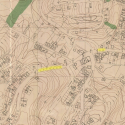In 1985, the Black Women’s Collective of São Paulo gathered in Brasilândia, a district with one of the city’s largest concentration of African descendants, to celebrate the renaming of a public plaza for Luíza Mahin (Figure 1). Mahin is commonly remembered for her involvement in uprisings of enslaved and free Africans in Salvador, Bahia, in the 1830s, perhaps the most dramatic period of antislavery rebellions in Brazilian history. In the years following the thwarted revolts of the 1830s, Mahin fled Salvador to an unknown fate.1While Mahin is often described as a principal protagonist in the 1835 Revolt, historians have debated whether her participation is a sociohistorical fact or contemporary construction. In what is the most meaningful source testifying to her participation in 1830s revolts—in addition to her very existence, which some historians doubt—her son identified her as being involved in the Sabinada uprising of 1837–38. For an entry into the debate, see João José Reis, Rebelião escrava no brasil: a história do Levante dos Malês em 1835 (São Paulo: Companhia das Letras, 2003) and Dulcilei da Conceição Lima, “Desvendando Luíza Mahin: um mito libertário no cerne do feminismo negro” (master’s thesis, Universidade Presbiteriana Mackenzie, 2011). Her son, Luís Gama, meanwhile, was enslaved and transported south to the city of São Paulo. There, he obtained legal freedom and a law degree, which he used to spearhead antislavery campaigns in São Paulo’s courts through the early 1880s.
It is easy to pass by this often-sleepy plaza (Figure 2) without recognizing the revolutionary histories its name references. Older men frequently sip coffee over checkerboards, and São Paulo’s thundering buses break the relative quiet as they barrel by. A nondescript plaque bears Mahin’s name in the center of the square, without historical context or her visage. Mahin became a national symbol of Black feminism in the twentieth century, yet neither she nor Gama had ties to Brasilândia. Why, then, did the Black Women’s Collective lobby to place Praça Luíza Mahin here? The answers to this seemingly local, ostensibly straightforward question ripple far beyond Brasilândia. They require a re/mapping—both literal and figurative—of urbanization, racial identity formation, and sociospatial inequities in Brazil’s most populous, ethnically diverse metropolis.

